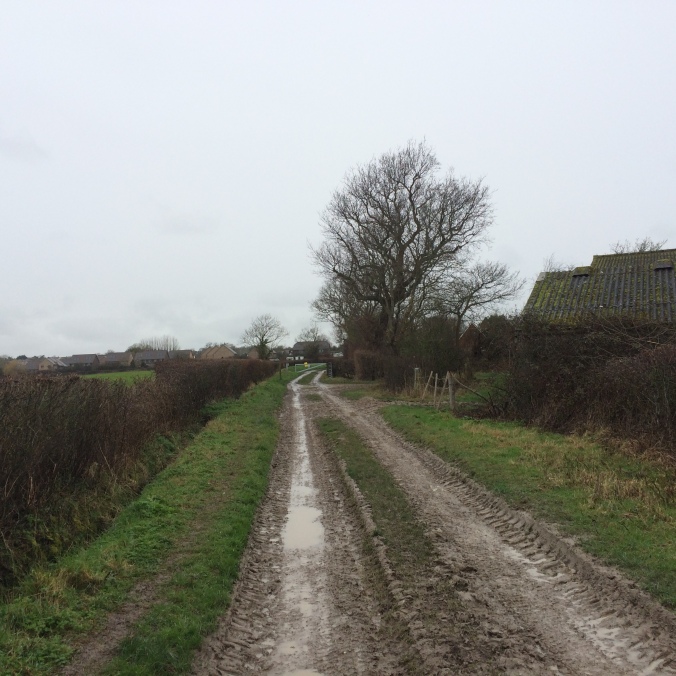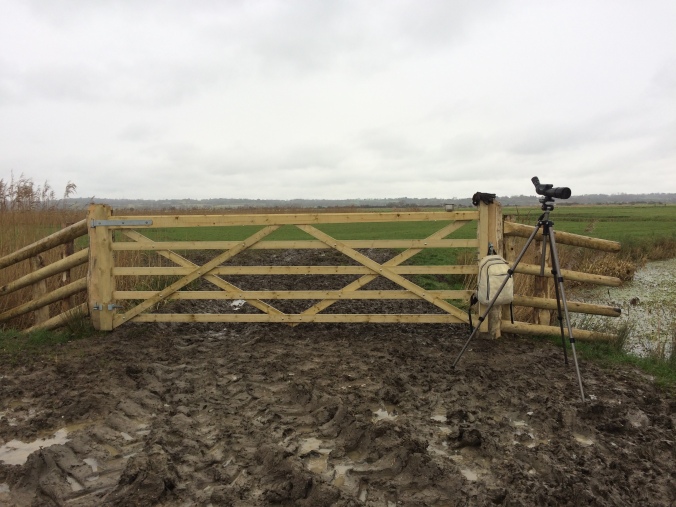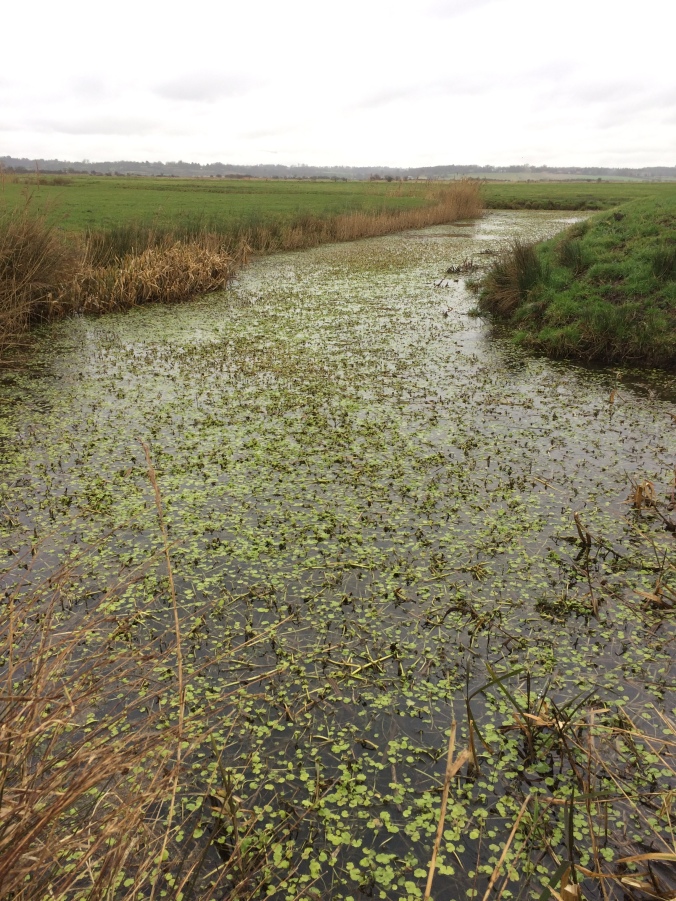A relentlessly drizzly day. But with more time than usual to play with, I thought I’d see what I could find within walking distance of home.
Setting off from home just before midday I walked across town (plenty of House Sparrows) to Marshfoot Lane, and from there dropped down into the mud.

Looking back up Marshfoot Lane. Theme for the day: mud
The temperature and still-short days generally qualify this time of year as ‘winter’, but the Celts’ notion that the beginning of February is the stirring of spring in the belly (Imbolc) is borne out by the birds. A Great Spotted Woodpecker drummed unseen towards Horsebridge, and a Chaffinch sang falteringly along the lane.
Out into the flatlands, the rain meant many raptors were sitting it out – Sparrowhawk and Kestrel sharing the same gate, the first of two soggy Buzzards. The main lot of geese (Canada, Greylags, an all-white farmyard special) were feeding on the piles of dredged mud and reeds from Snapsons Drove. But their two Russian White-fronted counterparts were not far away, feeding separately down towards White Dyke.
After a couple of teasing glimpses, the Great White Egret walked out of the ditches just south of Lookers Cottage, at the same time as around 700 Lapwings crossed the sky towards Herstmonceux and a cream-cap Marsh Harrier floated by. I couldn’t find the 2nd cal-year Hen Harrier today, although Chris B saw it the previous day, in kinder conditions.

A lot of smart new gates have been installed across Horse Eye.
Next the road down to White Dyke. The hounds were out on the East side of the road, flushing a number of thrushes (mainly Song Thrushes) and a Brown Hare as they went. Later I encountered a Fox surveying the pasture on the other side of the road, looking unruffled.
Down Level looked promising, with swathes of standing water, but it was empty of birds. In fact, I saw only two or three pairs of Mallard the whole way, and not a single Teal or Wigeon.
Along the track near Mappins, a few pipits feeding in the tussocky grasses almost certainly included a Water Pipit, but I didn’t get onto it for long enough to be sure. The last of seven Stonechats was encountered nearby, and the third Common Snipe.
I then took the extraordinary gloopy track that skirts the Western edge of the Levels, from White Dyke Farm up to Little Marshfoot Lane. You could easily lose a welly, and possibly the will to live, along this stretch. It produced little more, except a large flock of Fieldfare (150+).
Walking back into town I swung by the Common Pond just as the light was fading, and lucked onto the Kingfisher, Goldcrest and Chiffchaff. Five hours,

No definite Water Pipits today, but plenty of Pied Wagtails around the pennywort.
49 species: Great White Egret 1, European White-fronted Goose 2, Marsh Harrier 1 fem/imm, Kingfisher 1, Cetti’s Warbler 3, Chiffchaff 1, Stonechat 7, Little Egret 3+, Lapwing c700, Mallard 4-6, Coot 1, Moorhen 1, Canada Goose c80, Greylag, c30, Fieldfare 200+, Redwing, Song Thrush, Blackbird, Great Spotted Woodpecker, Chaffinch, Greenfinch, Goldfinch, Long-tailed Tit, Goldcrest, Great Tit, Blue Tit, Meadow Pipit, Pied Wagtail, Cormorant c35, Grey Heron, Starling, House Sparrow, Collared Dove, Woodpigeon, Jay 2, Magpie, Rook, Jackdaw, Carrion Crow, Kestrel 3, Sparrowhawk 1, Common Buzzard 2, Herring Gull, Black-headed Gull, Mute Swan, Wren, Dunnock, Robin, Reed Bunting,